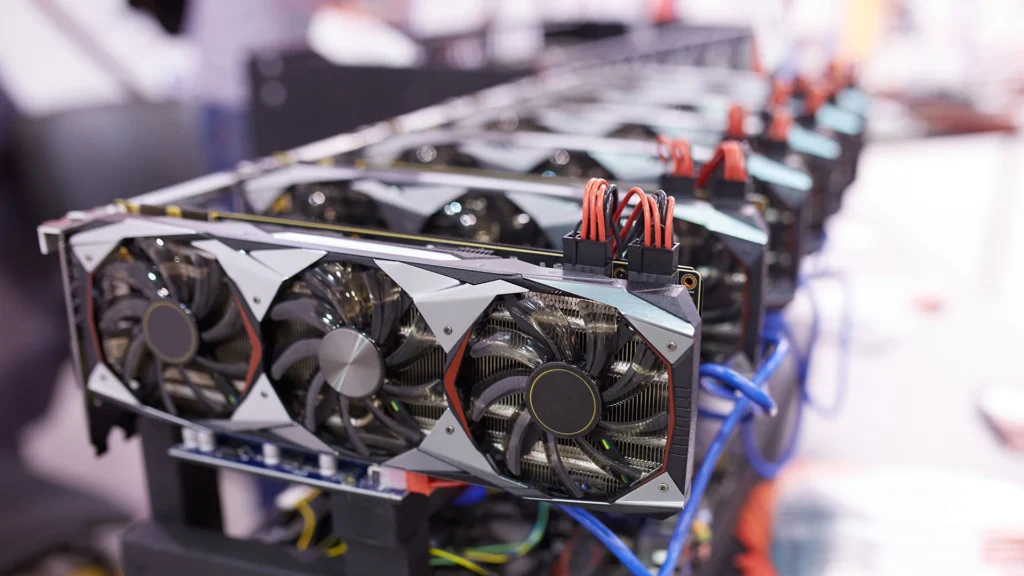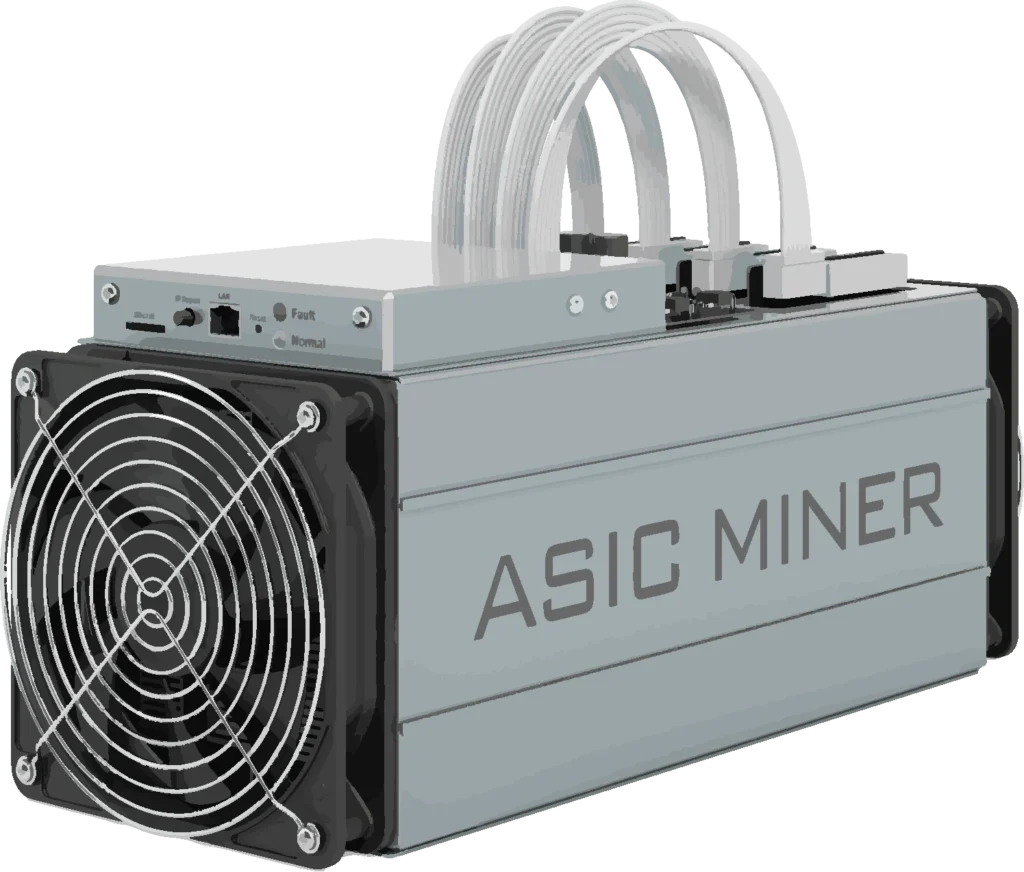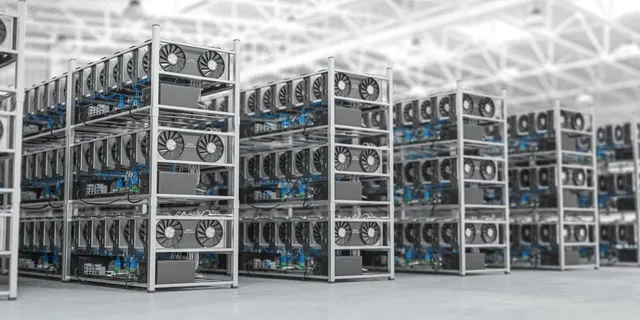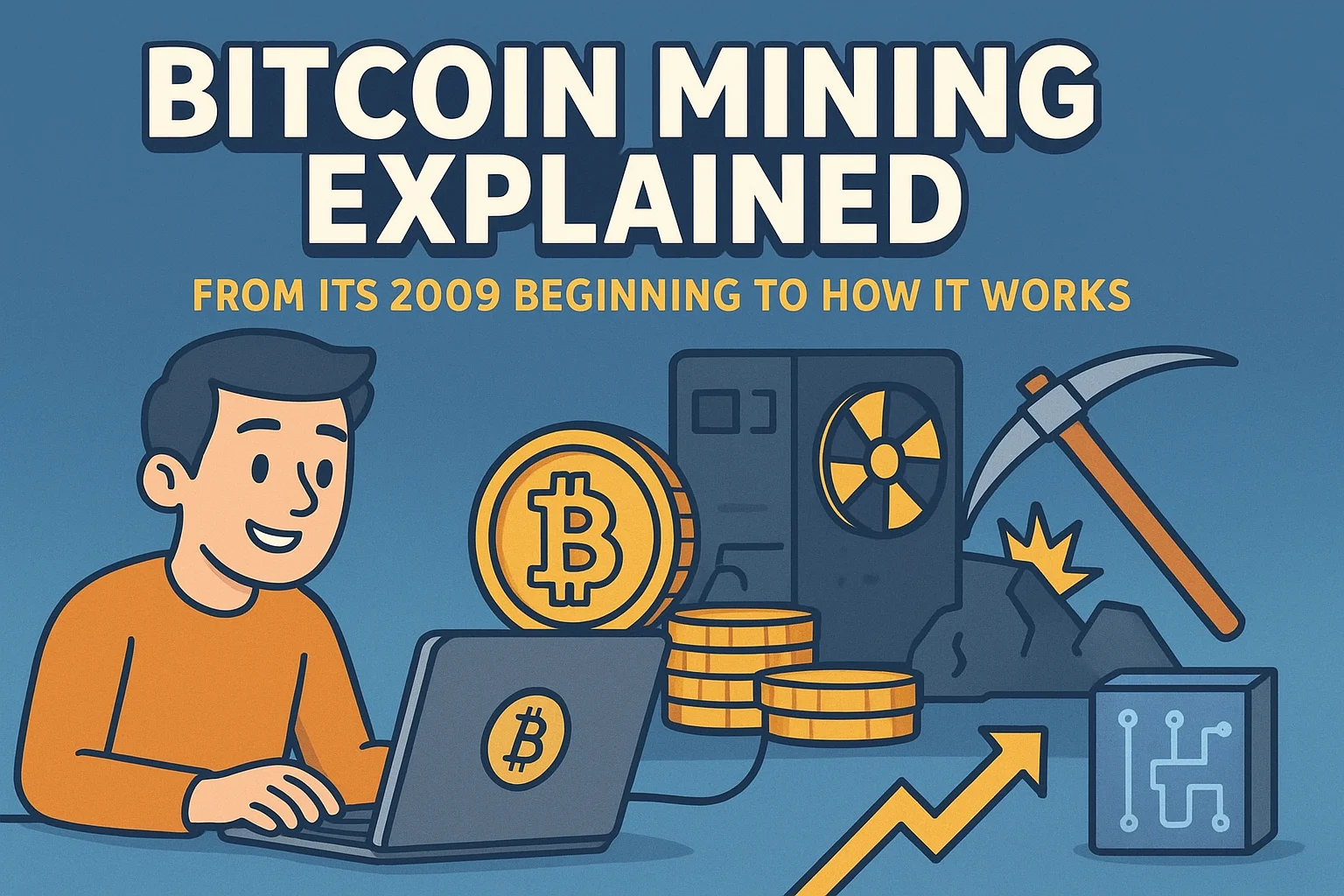As you may know, Bitcoin is mined in a way similar to how gold is extracted, but instead of using physical tools, Bitcoin mining relies on computer power and electricity. When Bitcoin was first launched in 2009 by Satoshi Nakamoto, the mining process was simple and accessible to almost anyone. With just a regular laptop and an internet connection, people could easily mine Bitcoin and earn it almost for free.
However, things have changed dramatically over the years. By 2025, Bitcoin mining will have become far more complex and competitive. Specialized machines called ASIC miners, massive mining farms, and high electricity costs now dominate the industry. In this blog, I’ll explain everything about Bitcoin mining—from how it started to how it works today, and why it has become so difficult over time.
1. Early Days (2009–2011): Mining with CPUs
When Bitcoin was first launched by Satoshi Nakamoto in January 2009, the mining process was simple and open to everyone. In those early days, anyone with a basic computer could participate in mining using just their CPU (Central Processing Unit). Since there were only a handful of miners at the time, the mining difficulty was extremely low. This meant that blocks were solved quickly and easily, allowing users to earn Bitcoin without needing any special equipment.
Each successfully mined block rewarded miners with 50 BTC, which was a massive amount compared to today’s rewards. The energy consumption was also minimal; people could mine Bitcoin on their personal computers while browsing the internet or doing other tasks. Back then, mining was so easy that someone could generate hundreds or even thousands of Bitcoins within a few days using nothing more than a laptop.
2. GPU Era (2011–2013): More Competition

As Bitcoin gained popularity, mining with regular computer CPUs quickly became inefficient. The network’s difficulty started to rise as more people joined, making it harder to earn rewards using basic hardware. To keep up, miners began switching to graphics cards (GPUs), which were far more powerful, about 50 to 100 times faster than traditional CPUs. GPUs could process the complex mathematical problems involved in Bitcoin mining much more efficiently, leading to a significant jump in overall mining performance.
Although the block reward was still 50 BTC at the time, competition among miners increased sharply. As a result, the chances of successfully mining a block on your own became much smaller. To overcome this challenge, miners began forming mining pools, where groups of miners combined their computing power to improve their odds of earning rewards. The rewards were then shared among all pool members based on their contribution, making mining more consistent and accessible for smaller participants.
3. ASIC Revolution (2013–2016): Specialized Hardware

The next major shift in Bitcoin mining came with the introduction of ASICs (Application-Specific Integrated Circuits). These are specialized computer chips built solely for mining Bitcoin. Unlike CPUs and GPUs, which are general-purpose processors, ASICs are designed to perform Bitcoin’s hashing algorithm with maximum speed and efficiency. They were thousands of times more powerful than GPUs and consumed far less electricity per unit of work. This innovation completely changed the mining landscape.
With ASICs dominating the network, the era of casual home mining came to an end. Mining became an industrial-scale operation, with large data centers and mining farms running thousands of ASIC machines around the clock.
The competition grew fierce, and the cost of entering the mining space increased significantly. Around this same period, in 2012, Bitcoin underwent its first “halving,” reducing the block reward from 50 BTC to 25 BTC. This event was built into Bitcoin’s code to control supply and mimic the scarcity of gold, making each mined Bitcoin gradually harder to earn.
4. Industrial Mining (2016–2020): Big Players Take Over

As Bitcoin continued to grow, mining difficulty increased exponentially. The more miners joined the network, the tougher it became to solve new blocks and earn rewards. To stay profitable, large-scale mining operations began setting up massive mining farms in regions with cheap and reliable electricity, such as China, Iceland, and parts of the United States. These locations offered lower power costs and cooler climates, which helped reduce the expense of running and cooling powerful ASIC machines.
For small or individual miners, this new reality made competition nearly impossible. The cost of equipment, electricity, and maintenance became too high to keep up with industrial mining farms. Meanwhile, Bitcoin’s built-in halving events continued to reduce rewards over time, dropping from 12.5 BTC per block in 2016 to 6.25 BTC in 2020. To adapt, most miners joined mining pools, where they combined their computing power and shared rewards proportionally. This approach provided a more stable and predictable income, even as mining became increasingly dominated by large-scale operations.
5. Today (2025): Highly Competitive and Global
Today, Bitcoin mining has grown into a massive global industry worth billions of dollars. It’s no longer something individuals can do casually from home; it now requires specialized, high-performance equipment and significant investment. Modern ASIC machines, such as Bitmain’s Antminer S21 series, are incredibly powerful and energy-efficient compared to earlier models.
These machines dominate large-scale mining farms that operate 24/7 across multiple countries. After the 2024 halving event, the block reward dropped to 3.125 BTC, making mining even more competitive and profit margins thinner. Despite the high energy consumption, many mining companies are shifting toward renewable energy sources like solar, hydro, and wind power to reduce costs and environmental impact.
Today, major mining hubs can be found in the United States, Kazakhstan, Russia, and other regions offering cheap electricity and favorable regulations. For individuals, mining Bitcoin at home has become almost impossible to do profitably due to the high costs of hardware and electricity. However, miners now also earn transaction fees in addition to block rewards—and as Bitcoin’s network activity grows, these fees are becoming an increasingly important part of their income.
Related Content
- 10 Reasons Why Bitcoin Is Often Called “Digital Gold”
- Best Places to Safely Store Your Bitcoin in 2025
- Binance DCA Bot Explained: The Easiest Way to Automate Your Crypto Investments
- How to Secure Your Crypto Funds in Binance Complete Guide
Conclusion
Bitcoin mining has come a long way since its humble beginning in 2009. What started as a simple process that anyone could do on a laptop has evolved into a highly competitive, global industry powered by advanced technology and large-scale mining farms. Over the years, the difficulty, costs, and rewards have changed drastically, shaping Bitcoin’s economy and securing its decentralized network.
Today, mining is no longer about earning easy coins—it’s about efficiency, innovation, and sustainability. With the rise of renewable energy and constant improvements in ASIC hardware, the future of Bitcoin mining continues to evolve. While individual miners have largely been replaced by industrial operations, the core idea remains the same: contributing computing power to maintain and secure the world’s first decentralized digital currency.

